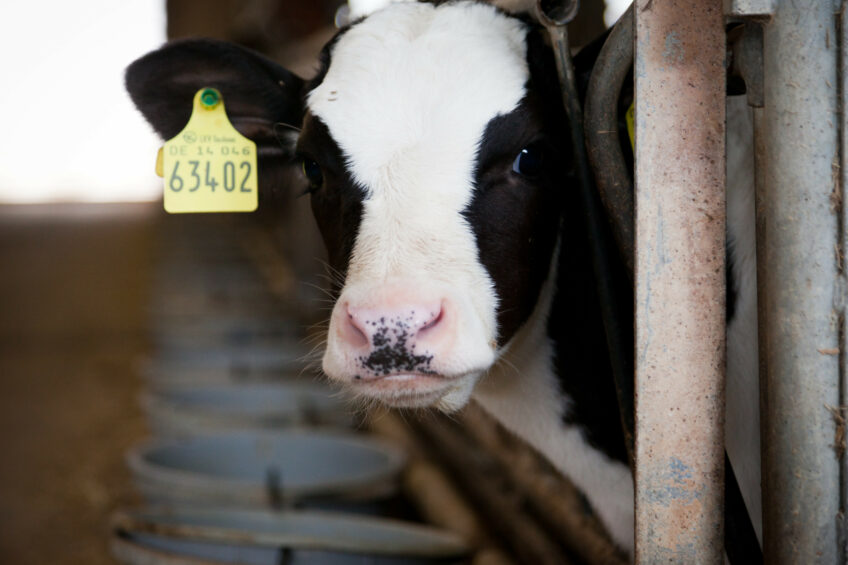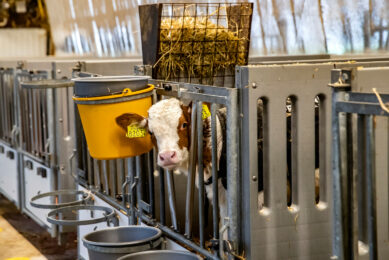Diarrhoea? Egg powder to the rescue

Another tool to reduce the use of antibiotics is the use of immunoglobulins from eggs. Trials showed that this product is effective to support a calf’s start in life and also to offer support when challenged by various forms of diarrhoea.
The main cause of calf loss during the first 2 weeks of life is diarrhoea. In general diarrhoea is characterised by more liquid being secreted than is being resorbed. However, diarrhoea is not a disease, but a symptom. Having diarrhoea has a protective function for the animal, because the higher liquid volume in the gut increases motility and pathogens and toxins are excreted faster. Diarrhoea can occur for several reasons. It can be caused by incorrect nutrition, but also by pathogens such as bacteria, viruses and protozoa.
Bacteria and viruses
E. coli belong to the normal gut flora of humans and animals and can be mainly found in the colon. Only a fraction of the serotypes cause diseases. The pathogenicity of E. coli is linked to virulence factors. Decisive virulence factors are for example the fimbria used for the attachment to the gut wall and the bacteria’s ability to produce toxins. Salmonella in general plays a secondary role in calf diarrhoea, however, salmonellosis in cattle is a notifiable disease. Disease due to Clostridia is amongst the most expensive one in cattle farming globally. In herbivores, clostridia are part of the normal gastro-intestinal flora, only a few types can cause serious disease. In calves, Clostridium perfringens occurs with the different types A, C, and D. Rotaviruses are the most common viral pathogens causing diarrhoea in calves and lambs. They are mainly found at the age of 5 to 14 days. Coronaviruses normally attack calves at the age of 5 to 21 days. Cryptosporidium parvum is a protozoa and presumed to be the most common pathogen causing diarrhoea (prevalence up to more than 60%) in calves.
Undigested feed and incorrect use of antibiotics
Plant raw materials (mainly soy products) are partly used in milk replacers as protein sources. These products contain carbohydrates, that cannot be digested by calves which can lead to diarrhoea. The transition from milk to milk replacer can also be a reason. An early application of tetracyclines and neomycin to young calves can lead to a change in the villi, malabsorption and therefore to slight diarrhoea. Longer therapies using high dosages of antibiotics can also lead to a bacterial superinfection of the gut. The problem is that in a disease situation, antibiotics are often used incorrectly. The use of antibiotics only makes sense when there is a bacterial diarrhoea and not due to viruses, protozoa or poor feed management. To keep the use of antibiotics as low as possible, alternatives need to be considered.
Egg powder to add immunoglobulins
In order to achieve optimal results in calf rearing, 2 approaches are possible. Firstly, the prophylaxis approach. This is the method of choice as diarrhoea can mostly be prevented. Therefore, it is necessary to supply the calf with the best possible equipment. As antibodies are one crucial but limiting factor in the colostrum of the ‘modern’ cow, this gap needs to be minimised. A study conducted in Germany in 2015 demonstrated that more than 50% of the newborn calves had a deficiency of immunoglobulins in the blood. Only 41% of the calves showed an adequate concentration of antibodies in the blood (>10 mg IgG/ml blood serum). Immunoglobulins contained in hen eggs (IgY) can partly compensate for poor colostrum quality and serve as a care package for young animals. A trial was conducted with an egg powder product* on a dairy farm (800 cows) in Brandenburg, Germany. In total 39 newborn calves were observed until weaning (65th day of life). Before birth, the calves were already divided into control and trial group according to the lactation number of their mother cow. All calves were fed the same and received 4 litres of colostrum with ≥ 50 mg IgG/ml on the first day of life. Control (n=20): no additional supplementation and the trial group (n=19): day 1 – 5: 100g of the egg powder product per animal per day mixed into the colostrum or milk. It was shown that the calves in the trial group showed a significantly higher (13%) weaning weight (105.74kg compared to 93.45kg in the control group) and 18% higher average daily gain (999g compared to 848g in the control group) (Figure 1 and Figure 2).
Support during acute diarrhoea
When diarrhoea occurs, the calf has to be treated. So the second approach is to find the best and quickest solution. It is not always necessary to use antibiotics, as they do not work against virus or protozoa. Egg antibodies can be an answer when combined with electrolytes as the following trial shows. On a dairy farm (550 cows) in Germany a feeding trial with a product** based on egg powder and electrolytes was conducted from December 2017 to May 2018. 2 groups of calves were used. Before birth the animals were allocated into the 2 groups according to the calving plan and were examined from day one until weaning (77th day of life). All calves suffering from diarrhoea (38 in total, 17 in the control and 21 in the trial group) were treated as follows: Control (n=17): Application of electrolytes and trial group (n=21) received 50g of the egg powder and electrolytes product twice daily, stirred into the milk replacer until diarrhoea stopped. If the diarrhoea did not stop or even got worse, the animals were treated with antibiotics. It was shown that in the control group the antibiotic treatment necessary was nearly twice as long as needed in the trial group (Figure 3).
This means also that nearly twice the amount of antibiotics were used. This leads to the conclusion that calves in the trial group had an improved health status compared to calves in the control group. A further result from the improved health status was an increase in performance in the trial group (Figure 4).
The average daily weight gain of the trial group was 20% higher than in the control (600 vs. 500g per day) leading to a significantly higher weaning weight (87.8kg) than in the control (80.7kg).
*Globigen Colostrum, **Globigen Dia Stop (EW Nutrition, Germany).
Join 13,000+ subscribers
Subscribe to our newsletter to stay updated about all the need-to-know content in the dairy sector, two times a week.










